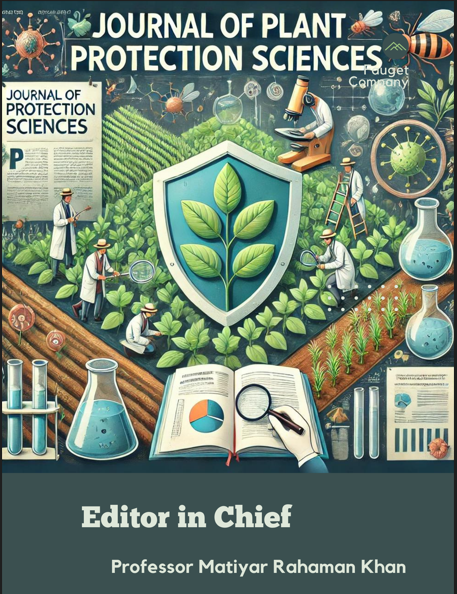Comparative ecological behaviour of some pre- and post-tsunami isolates of Trichoderma harzianum and T. viride from Andaman & Nicobar Islands
DOI:
https://doi.org/10.48165/Keywords:
Andaman and Nicobar Islands, pre- and post-Tsunami, Trichoderma, rhizosphere colonization, competitive parasitic abilityAbstract
A comparative ecological study of some pre- and post Tsunami isolates of Trichoderma harzianum and T. viride from the Andaman and Nicobar Islands, India, was undertaken to assess the effect on some ecological behavoiur of these biocontrol agents. All the isolates showed better parasitic ability and rhizosphere colonization when the competition of other organisms withdrawn compared to natural and sun dried soil. Both competitive parasitic behaviour and rhizosphere colonization was low inpost-Tsunami isolates of Trichoderma. The chlamydospore inoculum was found best in percentagecolonization of sclerotia of boh R. solani and S. rolfsii, followed by mycelial and conidial inoculum.The isolate ThrAN-5 (T. harzianum) was most efficient in parasitizing the sclerotia of S.
References
Bae YS Knudsen GR. 2005 Soil microbial biomass on growth and biocontrol efficacy of Trichoderma harzianum. Biological Control 32: 236-42.
Barak R Elad Y Mirelman D Chet I. 1985 Lectins : A possible basis for specific recognition in the interaction of Trichoderma and Sclerotium rolfsii. Phytopathology 75: 458-62.
Bhagat S Pan S. 2007 Mass multiplication of Trichoderma harzianum on agricultural byproducts and their evaluation
against seedling blight of mungbean and collar rot of groundnut. Indian Journal of Agricultural Sciences 77: 583-88.
Cole-Smith JR Cook RC. 1971 Survival and germination of fungal sclerotia. Annual Review of Phytopathology 9: 65-92.
Hadar Y Harman GE Taylor AG. 1984 Evaluation of Trichoderma koningii and T. harzianum from New York soils for biological control of seed rot caused by Pythium spp. Phytopathology 74: 106-10.
Henis Y Adams PB Lewis JA Papavizas GC. 1983 Penetration of sclerotia of Sclerotium rolfsii by Trichoderma spp. Phytopathology 73: 1043-46.
Hubbard JP Harman GE Hadar Y. 1983 Effect of soil borne Pseudomonas spp. on the biological control agent. Trichoderma hamatu, on pea seeds. Phytopathology 73:655-59.
Knudsen GR Bin L. 1990 Effect of temperature, soil moisture and wheat bran on growth of Trichoderma harzianum from alginate pellets. Phytopathology 80: 724-27.
Lewis JA Papavizas GC. 1984 A new approach to stimulate population proliferation of Trichoderma species and other potential biocontrol fungi introduced into natural soils. Phytopathology 74: 1240-44.
Lewis JA Papavizas GC. 1985 Effect of mycelial preparations of Trichoderma and Gliocladium on populations of R. solani incidence of damping off. Phytopathology 75: 812- 17
McLean KL Swaminathan J Frampton CM Hunt JS Ridgway HJ Stewart A. 2005 Effect of formulation on the rhizosphere competence and biocontrol ability of Trichoderma atroviride C52. Plant Pathology 54: 2212-18.
Orr KA Knudsen GR. 2004 Use of green fluorescent protein and image analysis to quantify proliferation of Trichoderma harzianum in non-sterile soil. Phytopathology 94: 1383- 89
Papavizas GC.1985 Trichoderma and Gliocladium: Biology, Ecology and Potential for Biocontrol.Annual Review of Phytopathology 23: 23-54
Rifai MA. 1969 A revision of the genus Trichoderma. Mycology Papers 116: 1-56.
Young N Ashford A. 1995 Apoplastic permeability of sclerotia of Sclerotium rolfsii, Sclerotium cepivorum and Rhizoctonia solani. New Phytology 131: 33-40.

